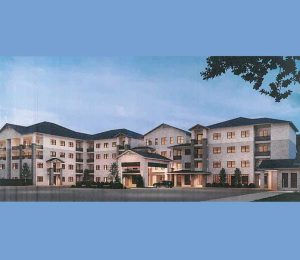Future retirement communities establishing in Coweta County now have guidelines to follow. The Coweta County Commission on Nov. 19 unanimously adopted an ordinance amendment creating a new zoning district specific to those communities.
The Residential Retirement Community and Care District (RRCC) guidelines restrict communities to a minimum of 80 percent of households including a resident who is 55 years of age or older. That requirement is in line with federal standards adopted in 1995.
Housing types in the new district include single-family attached and detached homes and multi-family retirement apartments.
Single-family attached and detached units require a minimum of 1,200 square feet while retirement apartments required a minimum of 500 square feet and a maximum of 12 units per acre.
The new district allows for flexible design to permit stand-alone unassisted living for mature persons or a life-cycle design to provide unassisted living units, assisted living units, and care facilities. Assisted living and care facilities do require a conditional use review by the Board of Zoning Appeals and approval by county commissioners.
The amendment also requires a 50 foot planted buffer where a RRCC district adjoins property zoned or used as single-family residential. The Board of Commissioners can however establish buffer widths and composition at the time of zoning review as appropriate to each site.
The new district also provides for hospitals, nursing homes, assisted living facilities and care facilities.
Also in the amendment is the requirement that retirement communities form a homeowners association.
County Planning Director Robert Tolleson in an Oct. 10 letter said the share of Coweta’s population held by people aged 55 years and older increased from 18 percent in 1990 to 22 percent in 2010.
The Georgia Office of Planning and Budget (OPB) is forecasting that by 2020 this age group will compose 27 percent of the projected county population, Tolleson said.
Georgia’s population of the 55 and older age group stayed about the same at 18 percent in 1990 and 18 percent in 2010. OPB also projects the age group will jump to a 27 percent share of Georgia’s 2020 population.










Leave a Comment
You must be logged in to post a comment.